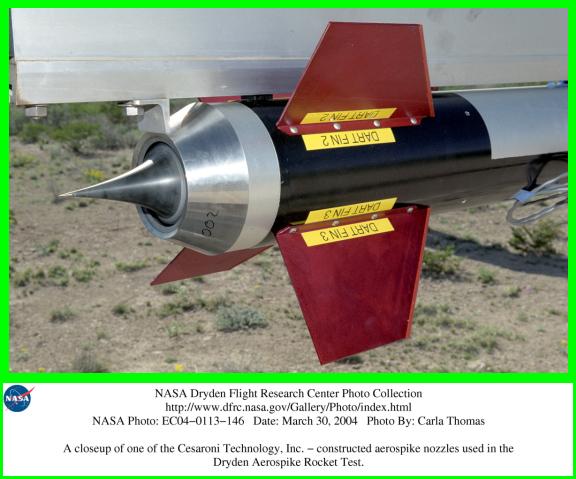The "Spike" Configuration

http://www.dfrc.nasa.gov/Gallery/Photo/Aerospike_Rocket/Small/EC04-0113-146.jpg
The "Spike," or annular, engine is one of three basic engine designs: cones, bells, and annulars.
COMPARISON OF ENGINE TYPES:

http://www.aerospaceweb.org/design/aerospike/shapes.shtml (modified)
The Cone, on the left, is the simplest engine design. A cone with a narrow angle provides the greatest thrust, but a longer engine means increased weight. A short, wide-angle cone tends to be unstable under pressure (in the atmosphere). For example, the Apollo Saturn 5 featured long, relatively thin nozzles for optimum thrust at sea level. The Command Module, which operated only in space, utilized a comparatively wider engine for more expansion in space. The Bell nozzle is a compromise, opening up more rapidly near the throat and then opening more slowly near the end. However, bell nozzles are optimized for specific altitudes, therefore they will only provide their maximum thrust at a given altitude - at all other points they will provide less-than-optimum thrust.
The annular, or "altitude compensating" engine is a more recently developed design. Commonly referred to as Spike engines, annulars operate with exhaust flow outside what is typically thought of as the nozzle. The exhaust flows around a central spike, rather than being contained by walls. They are called "annular" because the throat is donut-shaped, with the spike protruding from the middle.
Diagram by Tess Caswell
Looking from beneath, the yellow indicates the throat of the nozzle. The light blue circle in the middle indicates the spike.
| Back to Home | How do Rockets Work? | The Aerospike | Bibliography |